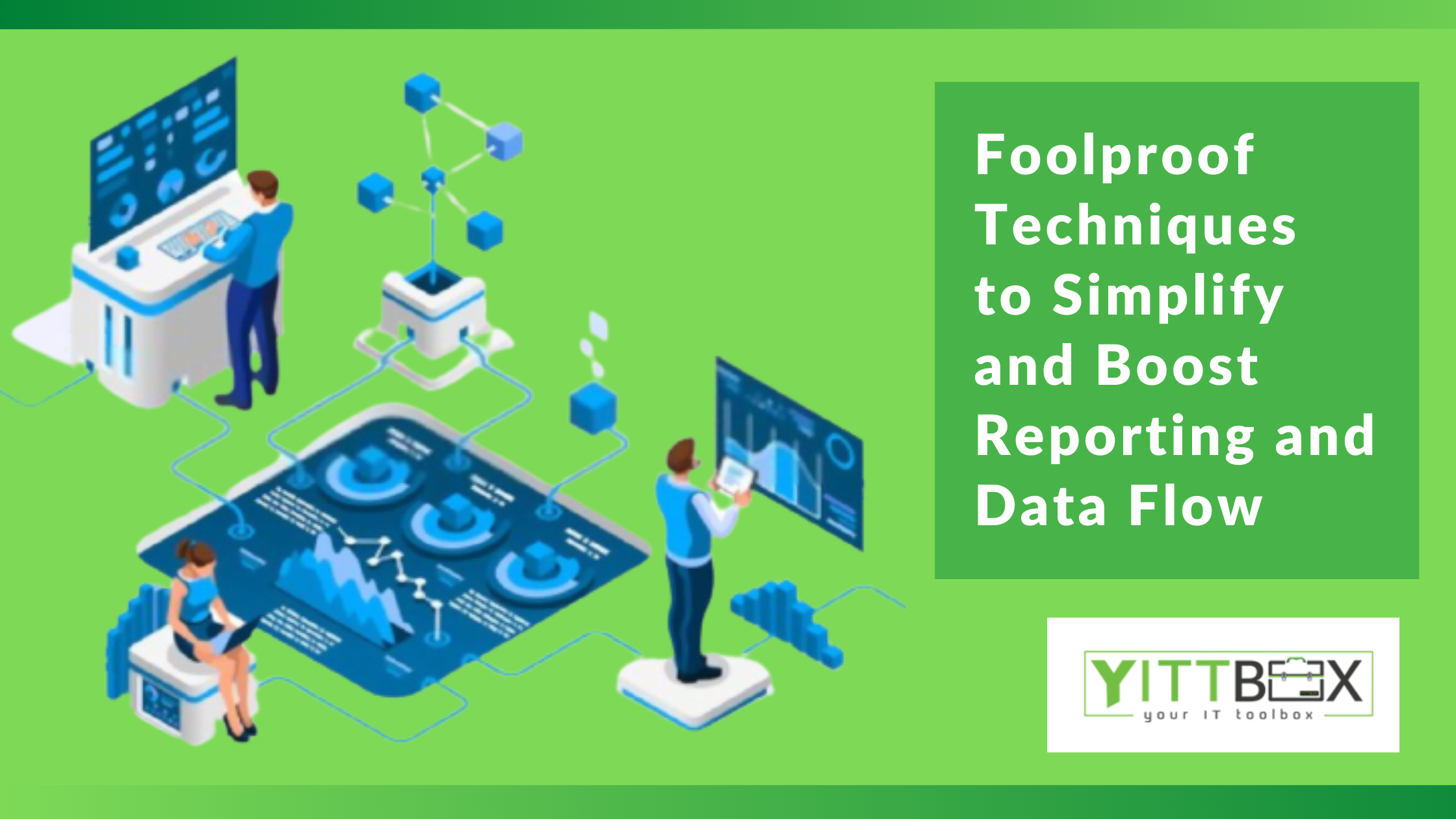Foolproof Techniques to Simplify and Boost Reporting System and Data Flow
Efficient reporting is both a company’s face to the external world and the lifeblood that enables them to make clear-cut decisions with a visionary approach. Management reporting is a crucial yet often complex aspect that leaves companies confused, impacting decision-making and overall business performance.
Moreover, those having technical skills to generate reports don’t necessarily comprehend the information needed in a given situation. And those who know the business drivers fail to see things from a technical point. Gaps like these cause problems in management reporting and inefficient use of data.
The Stake of Companies in the Modern World
Though organizations worldwide are seizing every opportunity to enhance efficiency and streamline business processes with the power of advanced technology and automated systems in this digital era, there’s often a hitch here and there in reporting aspects. It leaves most companies in the lurch that hit employee and business performance in the wrong place.
Reporting is an essential element across all departments in an organization, and it serves numerous people both inside and outside the organization.
While companies put all efforts to enhance the record-to-report process with ERP and automation, the outdated technology used causes hindrance. It negatively impacts the core purpose of reporting and its effect on an organization’s future.
There are a handful of essential but underutilized solutions available to all companies looking to enhance and simplify data flow and the reporting process. While there are proven tools like Excel, Word, PowerPoint, and others, the advancement of technology enables organizations to take an insightful and innovative approach to report and streamline data flow across various processes.
Know your stakeholders’ needs
If you’re looking to optimize your company’s reporting process, it’s vital to recognize and include the requirements of your stakeholders, both internal and external. These often include the investors, the management, auditors, and everyone actively involved in the company’s strategic decision-making process. Now it becomes pretty easy to eliminate generating reports that are duplicative or don’t serve any purpose. Perform this exercise often to determine whether generating specific reports meet your business needs and enables growth and expansion. Instead of creating reports that escape stakeholders’ attention or don’t serve their purpose, this process lets you define only those reports that add value and target the specific stakeholders for optimum use.
Document business requirements
This step is where you create an outline regarding the type of information needed for generating a particular report for specific stakeholders. Documenting all the information essential to enhance business function and empower stakeholders’ participation enhances efficiency and boosts productivity. It also includes documenting key questions that help arrive at clear-cut decisions to improve individual and business performance.
It helps determine the essential things for creating reports and eliminate fanciful, unrelated data that adds to the confusion. Documenting vital information can be achieved via collaboration on cloud technology that significantly enhances team communication and ensures optimum performance. It’s also vital to avoid conflicts among various stakeholders regarding conflicting data sources across several reports. Reporting from a single source ensures everyone’s on the same page that helps make better business decisions.
Organize data
After identifying your stakeholders and the data needed for generating reports, collect required data from several sources to collate them for easy use. It helps create easy-to-understand, intuitive reports for making comprehensive business decisions. Including a checking system ensures the data is free from errors and is consistent throughout the organization.
It pays to organize the data into categories to avoid duplication of data and eliminate common errors that prove costly in the long run. Information is valuable and good only as long as it serves the essential purpose. Hence, organizing, sorting, and streamlining data maximizes efficiency and makes it easy to create reports that impact the organization positively. It also makes it easy for you to make changes quickly without any hassles.
Having an ERP system does the job, but you can also include manual control to ensure consistent and accurate data. You can also design reports to draw data directly from the ERP to optimize the reporting process and streamline throughout the organization.
Review the work
Reviewing the reporting process is crucial before going any further, and it pays to review each report with the specific stakeholders. Stakeholders can review drafts of each report using actual data or real-time data and give their feedback to make necessary changes and enhance efficiency.
The reviewer will also provide valuable comments to enhance transparency and communication within an environment to arrive at clear decisions. A single version of the report will help maintain control and ensures everyone involved is on the same page to avoid miscommunication and errors.
Automate the reporting process
There are highly effective tools like SAP, Oracle, Hyperion, and others that enable companies and stakeholders to automate the reporting process. This helps reduce labor costs to a great extent and ensures enhanced efficiency in the reporting process. At the same time, these tools remove complications in the process by improving communication channels throughout the process. It also simplifies the entire process for improving functionality and fostering team effort.
Organize an inventory of reports
The final step to ensure efficient data flow and reporting is to fine-tune and maintain an inventory of reports for future reference. Ensure the inventory is accessible to all those involved in strategic decision-making of the process. It’s crucial to keep investors, the financial team, the management, and others in the loop to keep them aware of all the reports generated. It also helps in maintaining the continuity of the information for optimal usage.







